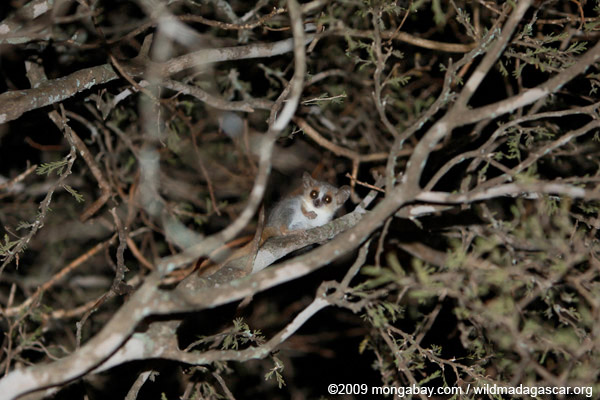
Gray mouse lemur (Microcebus murinus) in Madagascar. Photo by: Rhett A. Butler.
Spanning the gamut from mouse lemurs to mountain gorillas, All The World’s Primates is a comprehensive database of primate species. Founded in 2004 by Noel Rowe and Marc Myers and designed primarily to aid scientists and college students in primatology research, ATWP is also readily accessible to anyone who would like to know a little more about primates. The database is continually updated when new species are discovered; from its inception in 2004 until 2010, 58 new species had been added to the site. In addition to discoveries made by primatologists in the field, All The World’s Primates compiles information from the latest genetic studies. The site also includes photos and videos of many species, and was recently expanded to include a visual key for identification. A trivia game is also in the works. The goal of the ATWP is to inspire interest in primate conservation by increasing awareness of the plights many primates are facing today. Donations to the site are used by Primate Conservation Inc. to fund research into the planet’s most imperiled and least-known species.
In April, Mongabay.com caught up with ATWP co-founder Noel Rowe to discuss the database, primate conservation, and how he came to devote his life to this intriguing order of animals.
Morgan Erickson-Davis: When did you first become interested in primates?
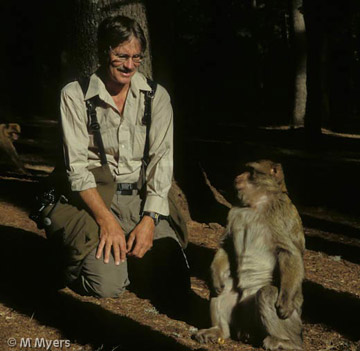 Noel Rowe with a Barbary macaque (Macaca sylvannus). Photo by: Marc Myers. |
Noel Rowe: My mother took me to the Cincinnati Zoo and I saw the gibbons swing (brachiate) up and
down their high metal cage from bars suspended from the ceiling. When they stopped, I
asked my mother to please get them to do it again. Being naturally clumsy and terrestrial,
I enjoy nothing more than watching primates move through the trees.
Though I later worked at the Cincinnati zoo one summer in when I was in high
school, I got interested in marine biology in college. It wasn’t until I was in my mid 30s
that my sister, who was a travel agent at the time, told me about Earthwatch (www.earthwatch.org), an organization which helps connect researchers to volunteers that help them do their research physically and financially. I signed up for an Earthwatch trip to help Alison Jolly, who started studying lemurs Madagascar in 1962 only 2 years after Jane Goodall started to study chimpanzees. I had learned about the lemurs of
Madagascar in my biology class in high school. I was a photographer at the time so this
trip was life changing for me. I realized you could photograph primates if they aren’t
hunted and have been habituated to humans. The researchers of course have done the
really hard work of following the group of primates until they finally accept the human as
just a harmless part of their environment. I took 30 rolls of film of one species. They
were Verreaux’s sifakas (Propithecus verreauxi) long legged, slender, white lemurs with
brown crowns which leap from tree to tree with the greatest of ease.
Earthwatch trips are wonderful because for a two or three week vacation, you stay
in one place and get to know it and you have a guide that is the expert of that place and
you are part of a worthwhile project that is studying something interesting and making a
difference rather then being the usual tourist on the go and you get good photos. Our job
was to follow a group of sifakas, 5 to 7 individuals, and mark down where they are and
what they are doing every 5 minutes on a check sheet. Alison needed all of us volunteers
in the forest so she could follow 4 groups at once and know where each group was in
relation to the others as this was just before the mating season and she wanted to know
how the groups interacted in space and time.
The second important lesson, came from seeing how committed and hard working
Alison’s graduate student Shiela O’Connor was. She had been there for almost a year
with many stories to tell about her life in the forest and the lives of the lemur groups she
studied and knew so well.
The third and probably most important lesson I learned was that protected areas
are not protected from environmental change. Berenty is a small gallery forest along a river
and it is surrounded by agricultural fields. It is owned by a family that loves the forest
and has protected it for decades. But the forest was being taken over by the Cissus sp.
vine an invasive species from Asia that no native animal could eat. The vines grew to the
tops of the trees covered them and killed them. The droughts in this area are legendary as
this is southern Madagascar, the home of the spiny desert. Global climate change is
expected to make these droughts even worse, longer and more frequent. If the river dries
up for too long this forest will die.
Morgan Erickson-Davis: How did you come to realize that a comprehensive compilation was needed?
 Thomas’ leaf monkey. Photo by: Rhett A. Butler. |
Noel Rowe: In 1989 after several more Earthwatch trips and other travels to see primates in
the wild, I decided I needed to learn more about primates and how to study them.
I enrolled as a continuing education student at Stony Brook University and took
courses in Physical Anthropology. I had never been able to get in to the Anthropology
course at the college I attended because it was so popular. So I took Anthro 101 first
and later courses with Dr. Patricia Wright who discovered the golden bamboo lemur
(Hapalemur aureus) in 1986. In 1992 after reading about many different primates
from all over the world, I was totally frustrated because I wanted to know what they
looked like and the only book that had some of the primates illustrated was mostly
in black and white. I put together one page of a book I wanted to read with photos, a
map and information about Verreaux’s sifaka. At the time color copies had just come
out I made a copy of my paste up and gave it to Dr. Wright. She said, “This would
be a great book you should do all the primates!” In 1996 the Pictorial Guide to the
Living Primates was published by Pogonias Press with 234 species.
The All The World’s Primates website (alltheworldsprimates.org) is the
culmination of my desire to see all the species and subspecies of primates in one place
with photos, drawings, video and audio and up to date information about each one
including species nova, which are the species known about but not officially described.
Morgan Erickson-Davis: What was the most challenging part of creating the AWP database?
Noel Rowe: The taxonomy has been the most difficult part of the project. The last couple of
decades that we have lived through will be looked back on by the history of science
as the golden age of scientific discovery about primates and the biodiversity of the
Earth. So many more people are studying, so much more is known, and there are so
much new technology being used to study the natural world including radio collaring,
acoustic recording and computer analysis. Genetics, which studies the very molecules
that make up individual animals and populations, has revolutionized and radically
changed how we understand evolution and the phylogeny of primates and other living
things, how each is related and where they came from. We are still very much in the
midst of this scientific revolution. Many species have been recognized and elevated
from what were thought to be subspecies. With many more people doing field work
and forests being more accessible, over 80 species and subspecies including 2 genera
new to science have been described since 1990. Because so much more is known
from studying animals in their natural environment, how species are defined has also
changed. A species is more defined by how they recognize each other then how a
human looking at specimens in a museum would define them as a species.
Morgan Erickson-Davis: Was it difficult to find an expert on each and every species?
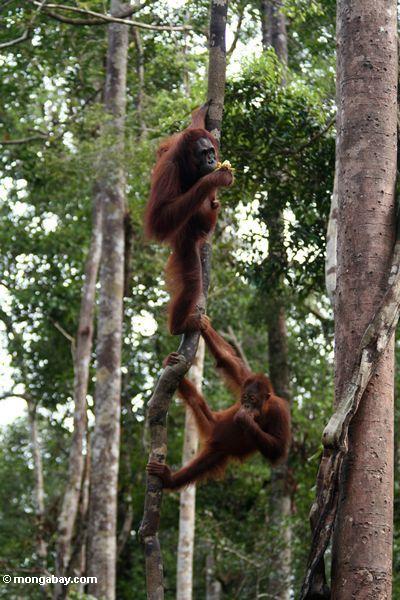 Pair of Bornean orangutans climbing a large liana in Borneo. Photo by: Rhett A. Butler. |
Noel Rowe: The difficulty was for the expert I found for each taxa to find the considerable amount
of time it takes to fill in all the information we wanted for each taxa. Primatologists
are busy people, who are working to publish their research, teach, and write grants
so that they can do more field work to collect more data to study and protect their
species, and the forest where they live.
Morgan Erickson-Davis: How did you overcome this?
Noel Rowe: Besides working on All the World’s Primates website, my other job is being the director
of Primate Conservation Inc., which has given small grants since 1993 to over 500
projects to study and protect the least known and most endangered primates in their
natural habitat. Thus I have a great familiarity with field workers young and old who
study primates. All you can do is ask and wait for positive response with gentle reminders
if necessary. Most of the authors have done original research on the genus or species or
subspecies which they write about. They are very familiar with “the literature” all the
scientific papers ever written about their taxa, but filling in our form with a citation for
each fact is a substantial amount of work for many taxa.
Morgan Erickson-Davis: How often is the database updated?
Noel Rowe: The database is continually being updated by the authors. We ask that they update their taxa once per year or suggest another author who is willing.
Morgan Erickson-Davis: What is currently the most threatened population of primates?
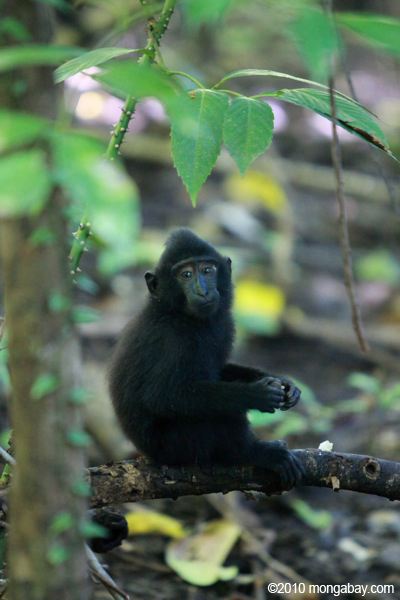 Infant crested black macaque. Photo by: Rhett A. Butler. |
Noel Rowe: The most endangered primate is the Hainan Gibbon (Nomascus hainanus) which lives on the island of Hainan off the coast of southern China. Its numbers are estimated to be below 20 at this point.
Morgan Erickson-Davis: What can be done to help them?
Noel Rowe: More resources and dedication by the powers that be to enforce the laws in place are needed to protect these gibbons. They exist in a fair sized national park, and they have
been legally protected for a long time but every year some are shot. Gibbons and most
primates reproduce very slowly. They live in pairs and females don’t reproduce until they
are 6 years old, then they have one infant that they nurse for 1.5 to 2 years before having
another infant. When the population is already low it doesn’t take much hunting to drive
the species to extinction. Females with infants are usually targeted because they are
slower and you get two for the price of one bullet. The mother is eaten or sold for meat or
medicine and the infant is kept or sold as a pet or for traditional medicine whose efficacy
has never been proved.
Morgan Erickson-Davis: A population of Miller’s grizzled langur was spotted in Borneo relatively recently
after it was thought to have gone extinct. Do you know of any updates on this?
Noel Rowe: Miller’s grizzled surili (Presbytis hosei canicrus) is a subspecies of leaf eating monkey from
north eastern part of Indonesian Borneo which has not been well studied. It was known
from Kutai National Park which was devastated by forest fires from the droughts of
el Nino in the 1990s. Primate Conservation Inc. funded a small survey of the southern
part of its range for this species which found only one group in 2008. Though there
is still quite a bit of good forest within its historic range. This taxon and several other
primates in the region have a price on their heads. Hunters shoot them less for meat
then for the possibility that they may have a bezoar stone in their guts which are said to
have “magical properties” and be an antidote to any poison. One dealer offered to buy all
the bezoar stones from a region in Borneo and the population of Miller’s grizzled surili
declined by 50 to 80 percent from 1996 to 2003.
Morgan Erickson-Davis: Did something happen in 2003 to stop this?
Noel Rowe: Not that I know of other then the monkey population declined so much it wasn’t worth the time and the bullet.
Morgan Erickson-Davis: Is it known yet how many individuals there are?
Noel Rowe: There has been no overall survey of this area that I am aware of.
Morgan Erickson-Davis: Are any conservation measures currently underway to ensure the continued survival of this species?
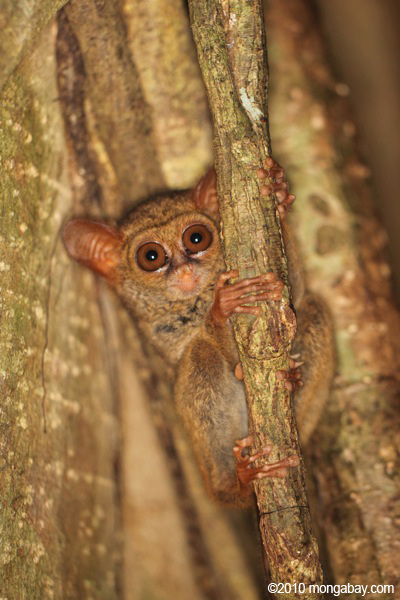 Tarsier in Indonesia. Photo by: Rhett A. Butler. |
Noel Rowe: Primate Conservation Inc. gave a small grant to Brent Loken in December of 2011 to study and protect this little known subspecies. The study population was found near a salt lick where the monkeys come to the ground to eat minerals that help them detoxify the secondary compounds found in their leafy diet. It is quite possible with further study of this subspecies’ morphology and genetics that it will be elevated to a full species. But the real solution for its continued survival is educating the local people about the uniqueness of this monkey that lives in their forests and
hopefully they will realize they are worth more alive then dead through tourism or other
forms of non destructive development. Primate Conservation Inc.’s mission is to help get
more people out in the field to study and protect the least known and most endangered
primates.
Morgan Erickson-Davis: Poaching due to demand for traditional medicine and religious purposes is a huge problem for many taxa. Overall, how are primates being affected by this black-market trade?
Noel Rowe: Primates are a large part of the black market trade. It depends in part on the culture and geography of where they live as to how bad the poaching is. South America has a subsistence trade in primate bushmeat and for pets. In Africa, there is huge commercial trade in bushmeat that affects all but the smallest primates. In some parts of Madagascar, there has been subsistence hunting for food but with the recent breakdown of the central government, a commercial bushmeat trade is said to have begun in the north of the country. Asia, with its rise of economic wealth and improved infrastructure, has had an increasing trade for traditional medicine even though more scientifically proven remedies are now available. Monkey wine, which is thought to be good for the health of pregnant women in Vietnam, uses any monkey available. The enigmatic and endangered Douc langur is often used for this preparation despite laws on the books against killing it. The pet trade for lorises has increased dramatically due to videos on the internet. Though they are the only primate with a poisonous bite and die very quickly in captivity because of their specialized diet, they are still sought after because they looked cute in the video.
Morgan Erickson-Davis: What’s being done do stymie demand?
Noel Rowe: Sadly not enough. There are some educational campaigns, but law enforcement is lacking or ineffective. Poachers and traders, who are caught may lose their catch and be fined but rarely are they subject to long prison sentences they might receive it they were caught with trading illegal drugs. Organized crime is said to be involved and the illegal trade in wildlife is calculated to be the second most lucrative market after drugs.
Morgan Erickson-Davis: Have you heard any recent news about other discovered/rediscovered species?
Noel Rowe: There are over 40 species nova listed in the database at alltheworldsprimates.org which are
known but as yet undescribed taxa which maybe species, subspecies or morphologically different populations. Gerp’s mouse lemur (Microcebus gerpi) was just described in December of 2011 and appears to live at higher altitudes then other mouse lemurs.
Morgan Erickson-Davis: Are there any taxonomic controversies currently in discussion?
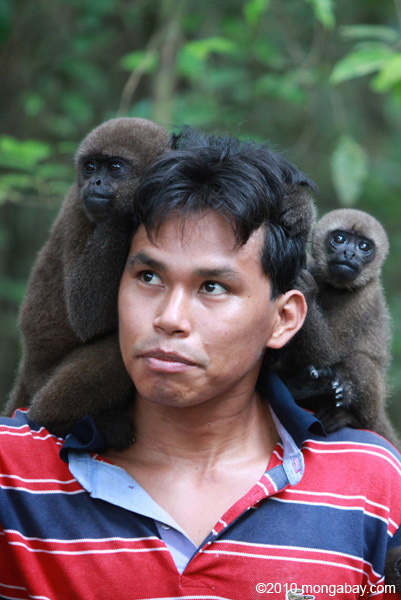 Common woolly monkeys at a rehabilitation center. Photo by: Rhett A. Butler. |
Noel Rowe: The main controversy for me is the definition of what constitutes a species genetically. How much difference on what part of the genome constitutes a species. These molecular techniques are so new and dynamic and improving so fast, this has yet to be specifically defined for the animal kingdom.
Morgan Erickson-Davis: The “splitters” vs. “lumpers” is a fascinating debate. I’ve heard that there’s movement within the conservation genetics community to shift focus from entire species to individual populations. Is this taking place in the primatology world?
Noel Rowe: The technology that has evolved to look at the molecular level of difference between species and subspecies and populations has changed the taxonomy of primates as it has in all the other kingdoms of life on earth. It has shown us that primates that look quite similar are quite different from each other. There are more full species and fewer subspecies now then twenty years ago in part due to the genetic data but also because many more dedicated researchers are in the forests studying primates. Finding out how they communicate and recognize each other in the real world.
Morgan Erickson-Davis: What changes do you expect to see from all these advances in genetic technology?
Noel Rowe: Geneticists are now able to look at a taxon’s whole genome. It is too early to tell what the huge amount of information will tell us about their relatedness and individuality. In the short term more species of primates will be identified and named. I expect that the number of primate species will go over 500 species from the current level of 416 according to the IUCN red list.
It is important that we recognize the huge amount of biological diversity on this planet. Humans like to simplify things to make it easier on ourselves and to justify our actions. For instance, the orangutan which occurs throughout much of Borneo and the northern part of Sumatra was considered one species twenty years ago. Genetic evidence along with morphological and behavioral data has shown it is two species. The Bornean orangutan has three subspecies. We humans, as a species, have destroyed large parts of the forests orangutans need to survive. It is quite possible we could have wiped out the Sumatran orangutan with the smug feeling, “It’s OK, they still exist on Borneo.” Each species and each population evolved in and are an integral part of that ecosystem. Without the primates, the forest will not function the same way. The seeds of some of the trees won’t be dispersed away from the parent tree, the forest won’t regenerate.
Related articles
Feared extinct, obscure monkey rediscovered in Borneo
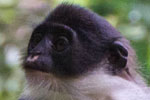
(01/20/2012) A significant population of the rarely seen, little-known Miller’s grizzled langurs (Presbytis hosei canicrus) has been discovered in Indonesian Borneo according to a new paper published in the American Journal of Primatology. Feared extinct by some and dubbed one of the world’s 25 most threatened primates in 2005 by Conservation International (CI), the langur surprised researchers by showing up on camera trap in a region of Borneo it was never supposed to be. The discovery provides new hope for the elusive monkey and expands its known range, but conservationists warn the species is not out of the woods yet.
First camera trap video of world’s rarest gorilla includes shocking charge
(05/08/2012) Ever wonder what it would be like to be charged by a male gorilla? A new video (below) released by the Wildlife Conservation Society (WCS), gives one a first hand look. Shot in Cameroon’s Kagwene Gorilla Sanctuary, the video is the first camera trap footage of the incredibly rare Cross River gorilla subspecies (Gorilla gorilla diehli); listed as Critically Endangered, the subspecies is believed to be down to only 250 individuals.
(05/02/2012) A new study confirms that bigger and stronger silverback gorillas have more success finding mates and raising offspring.
Picture: Orangutan rescued from peat forest endangered by palm oil, fires
(04/18/2012) Conservationists today rescued an adult male orangutan from a pocket of forest in Tripa, an area of deep peat that is at the center of battle over Indonesia’s commitment to reducing deforestation.
Cinderella animals: endangered species that could be conservation stars
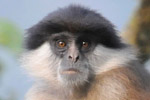
(04/18/2012) A cursory look at big conservation NGOs might convince the public that the only species in peril are tigers, elephants, and pandas when nothing could be further from the truth. So, why do conservation groups roll out the same flagship species over-and-over again? Simple: it is believed these species bring in donations. A new paper in Conservation Letters examines the success of using flagship species in raising money for larger conservation needs, while also pointing out that conservation groups may be overlooking an important fundraising source: “Cinderella animals.”
Slow lorises sold openly, illegally in Indonesia
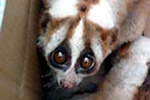
(04/03/2012) Defying Indonesian law, slow lorises are being sold openly in Jakarta markets for the underground pet trade, according to wildlife trade monitoring group TRAFFIC. In the last two weeks, TRAFFIC has recorded fifty different individual slow lorises on sale in the Indonesian capital. “The openness of the slow loris trade highlights the fact that having one of the region’s best wildlife protection laws and promising to protect species is not enough—there must be stronger enforcement in Indonesia and the public should stop supporting the illegal wildlife trade,” says Chris R. Shepherd, Deputy Regional Director of TRAFFIC Southeast Asia, in a press release.
Beyond Bigfoot: the science of cryptozoology
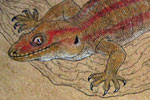
(03/26/2012) Anyone who doubts cryptozoology, which in Greek means the “study of hidden animals,” should remember the many lessons of the past 110 years: the mountain gorilla (discovered in 1902), the colossal squid (discovered in 1925, but a full specimen not caught until 1981), and the saola (discovered in 1992) to name a few. Every year, almost 20,000 new species are described by the world’s scientists, and a new book by Dr. Karl Shuker, The Encycloapedia of New and Rediscovered Animals, highlights some of the most incredible and notable new animals uncovered during the past century.
“Where’s my mama?”: campaign targets cruel slow loris pet trade [warning: graphic photo]
(03/20/2012) A new campaign by The Body Shop West Malaysia and TRAFFIC Southeast Asia attempts to raise awareness of the illegal slow loris pet trade. YouTube videos of “cute” pet slow lorises have raised demand for these endangered primates, but as the campaign highlights the pet trade is fueling slow loris deaths in the wild and cruel treatment, such as pulling out their teeth, to make them more desirable pets.
Without data, fate of great apes unknown
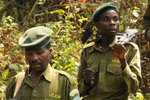
(03/12/2012) Our closest nonhuman relatives, the great apes, are in mortal danger. Every one of the six great ape species is endangered, and without more effective conservation measures, they may be extinct in the wild within a human generation. The four African great ape species (bonobos, chimpanzees and two species of gorilla) inhabit a broad swath of land across the middle of Africa, and two species of orangutans live in rainforests on the islands of Borneo and Sumatra in Southeast Asia.
Tiny tarsier makes big, ultrasonic noise
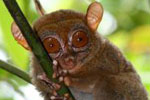
(02/13/2012) The Philippine tarsier (Tarsius syrichta), a 5-inch tall Southeast Asian primate, has long resembled a ventriloquist’s doll. It would open its mouth as though chattering away, but researchers heard nothing. Now, a new study in Biology Letters has found out why: the Philippine tarsier communicates ultrasonically, surpassing all other primates, and nearly all terrestrial mammals, in its ability to create sounds in the upper registry.